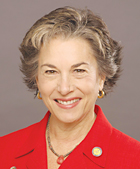
A proposed federal staffing minimum would require most nursing homes to boost RN hiring and put RNs and LPNs in greater direct care roles. It’s a move the bill’s House sponsor calls necessary to support current staff and stem turnover.
But legislation alone won’t solve the nation’s long-term care workforce woes, a group of educators and industry representatives said Friday in a virtual event advocating for better training, creative strategies and improved regulatory oversight.
During an hour-long session on “The Staffing Crisis in Long-Term Care,” speakers shared specific, labor-related strategies for improving quality of care in nursing homes.
Rep. Janice Schakowsky (D-IL) in January introduced H.R. 598, which includes updated staffing minimums and a mandate for round-the-clock RN coverage. It is one of several bills being considered as part of President Joe Biden’s $3.5 billion infrastructure package.
Her plan calls for 4.1 hours per day of patient care, with at least 0.75 of that provided by an RN and a minimum of 0.54 provided by an LPN. Remaining care could be provided by CNAs.

“This goes with the science. It goes with the research of what really makes a difference,” Schakowsky said during the event, hosted by the Hartford Institute for Geriatric Nursing.
Similar efforts have failed in recent years, and a reform measure recommending similar numbers in Pennsylvania is under fire from industry representatives, who say they have too few job candidates and get reimbursed too little to make such staffing minimums plausible.
But fellow presenter Ann Kolanowski, Ph.D., R.N., professor emerita of nursing at Penn State Hershey College of Medicine, said the light shined on nursing homes’ vulnerability during the pandemic may move the needle this time. She noted that the current federal staffing rule, which largely leaves the definition of adequate staffing to providers, was passed in 1987.
“It hasn’t been adjusted in 30 years to account for the medical complexity of residents that are now in our nursing homes,” she said.
While Schakowsky and Kolanowski focused on increasing the presence of RNs in nursing homes, Robyn Stone, senior vice president of research and co-director of the LeadingAge LTSS Center, tried to move the conversation beyond minimum staffing requirements.
“Numbers do not necessarily translate into quality of staff, and, in fact, we need to be careful that numbers don’t start translating into having warm bodies,” Stone said. “We are not only needing to pay attention to the numbers and the hours, but what are key staff competencies that need to be part of this equation? How do we think about addressing workplace organization and job design so that we can do some of (these) things?”
Nurses at all levels need better relationships with managers, including nurse supervisors and nursing home administrators. She said she often sees CNAs left out of key facility conversations, including daily huddles, where their insights could be valuable. Without a cultural shift and an emphasis on meaningful training, the industry will continue to shed workers, Stone said.
Kolanowski offered specific strategies for recruiting RNs, in particular. She noted that the country currently has 5 million licensed RNs, but just 3.5 million are working in direct healthcare jobs and just 7% of those work in nursing homes.
During the pandemic, enrollment in U.S. nursing schools grew 5%, but Kolanowski said many schools failed to respond to the true demand. Those same schools, she said, turned away 85,0000 qualified applicants last year because they didn’t have faculty or other needed resources.
To tap into the pool, she suggested more state-supported programs such as Hawaii’s preceptor program that gives organizations tax credits for training; student loan forgiveness for those who take long-term care jobs; and the creation of nursing home residency programs such as those in acute-care settings. She said the latter could be funded by the Centers for Medicare & Medicaid Services’ educational fund.
Schakowsy, though, insisted that regulation and oversight would be essential to drive change as private ownership increases within skilled nursing.
“Increasingly, we see private equity hedge funds getting into nursing homes, and I want to tell you, the primary goal is not necessarily the best care,” she said. “The primary goal is to maximize profits. So I really do think that oversight and regulation and looking at how taxpayer dollars are being spent is very, very important here.”




